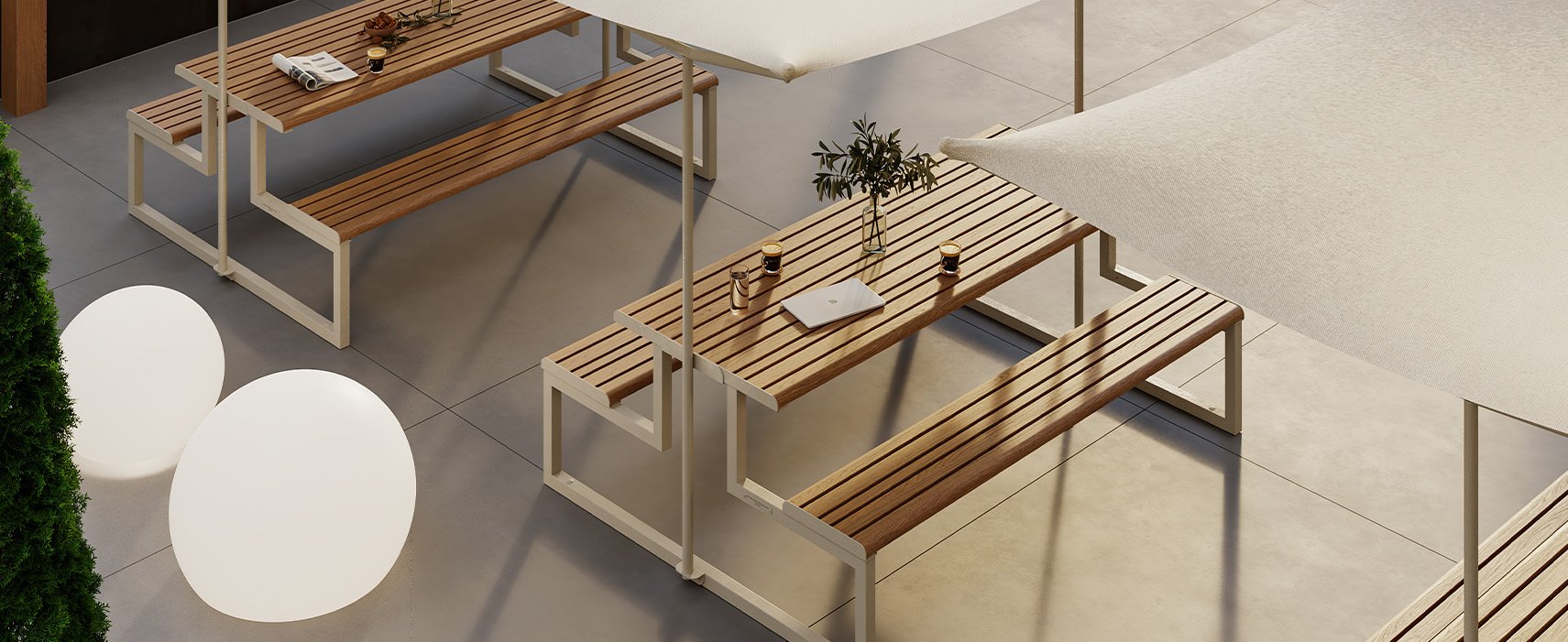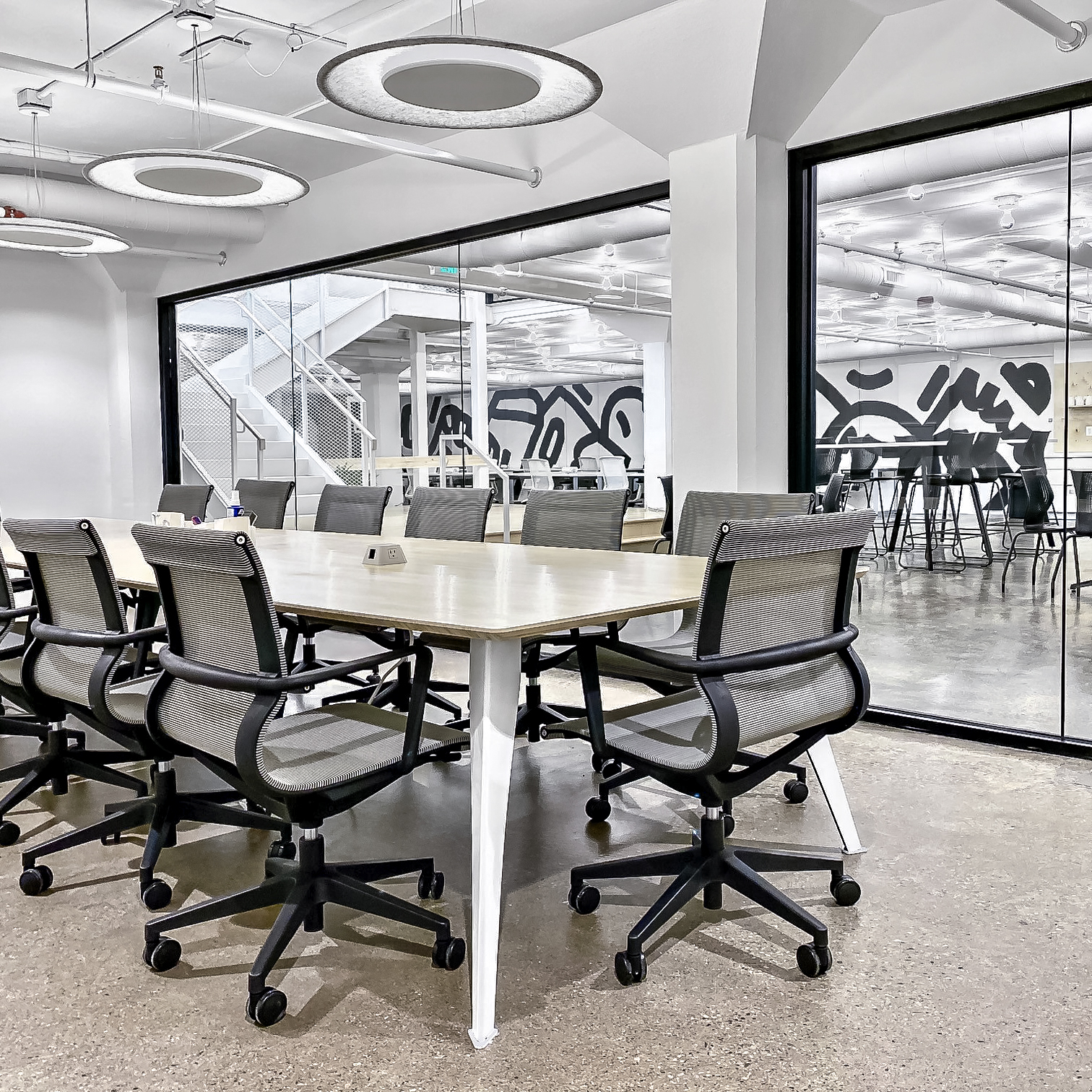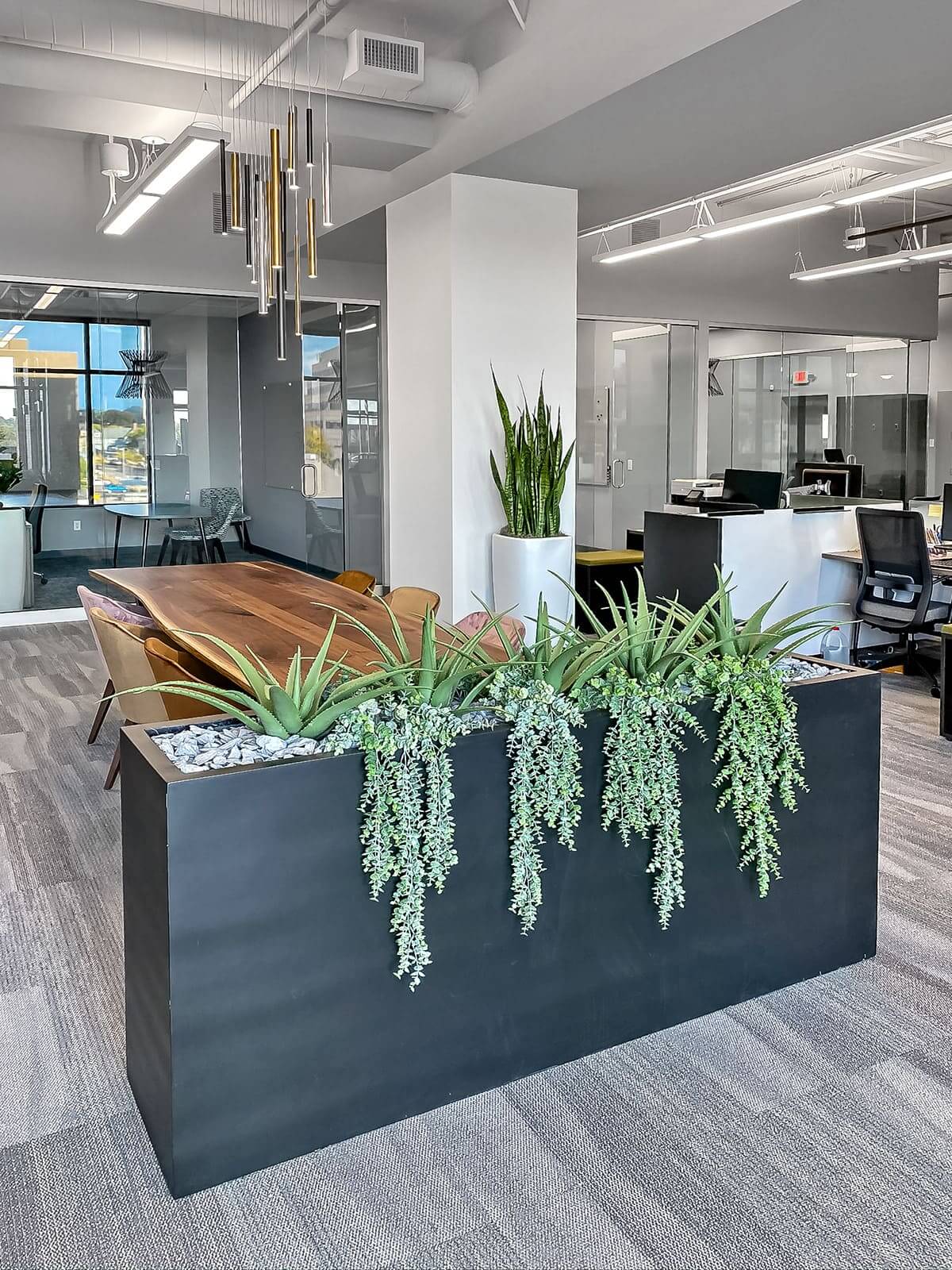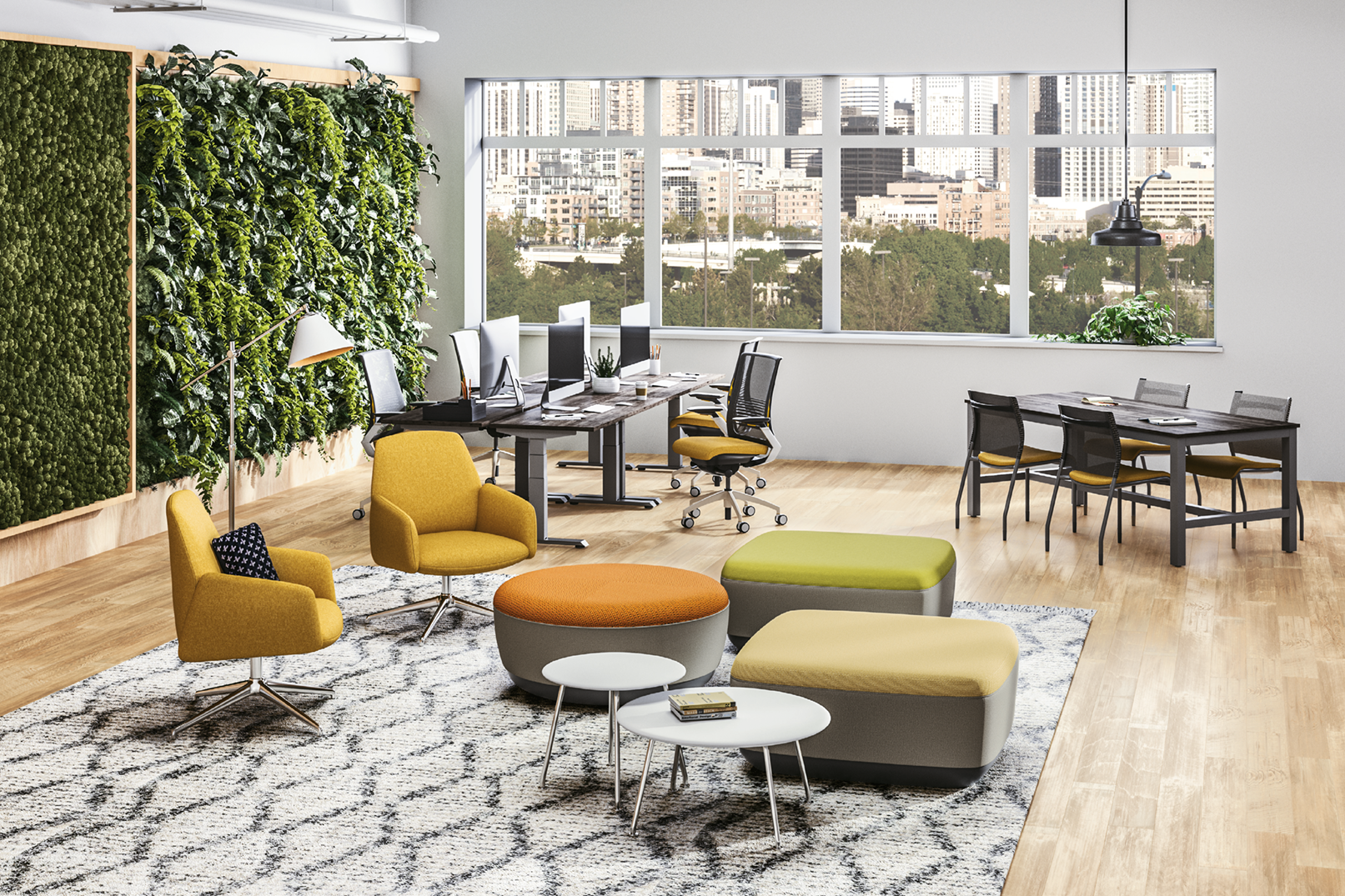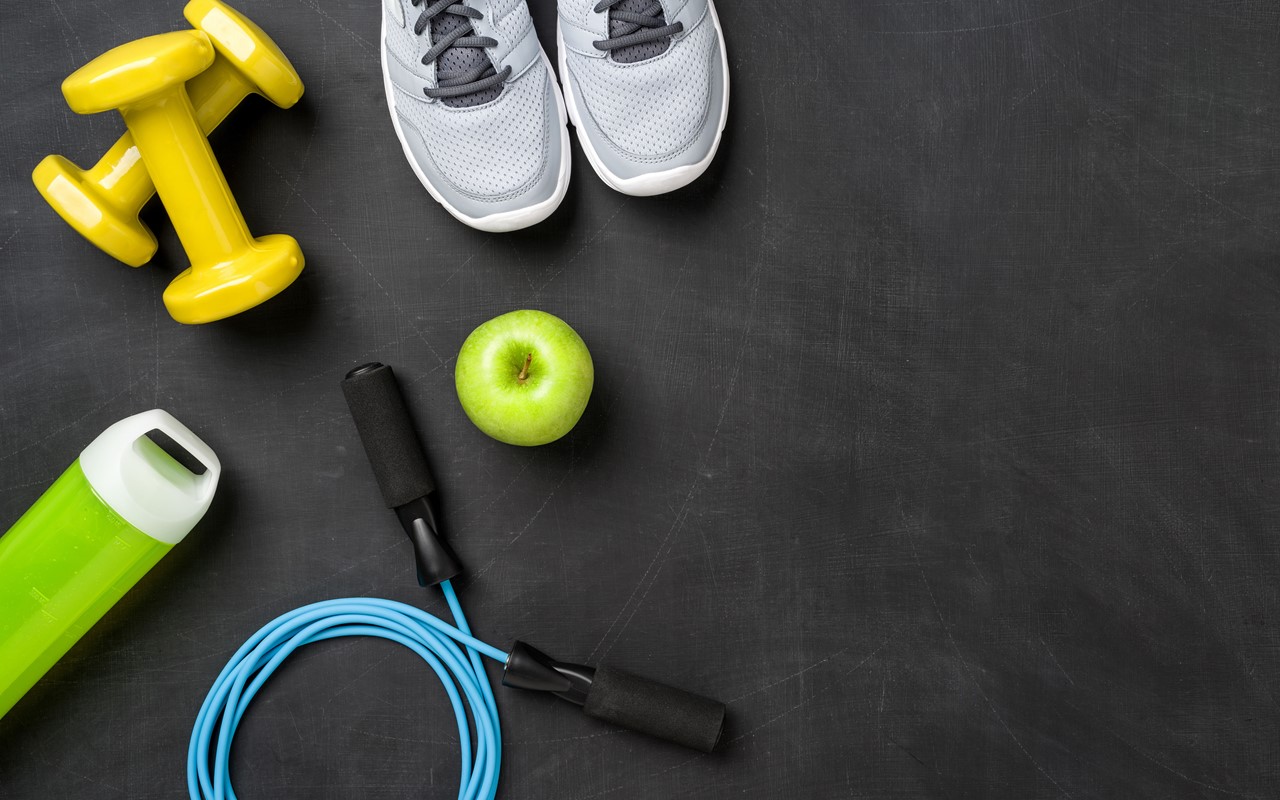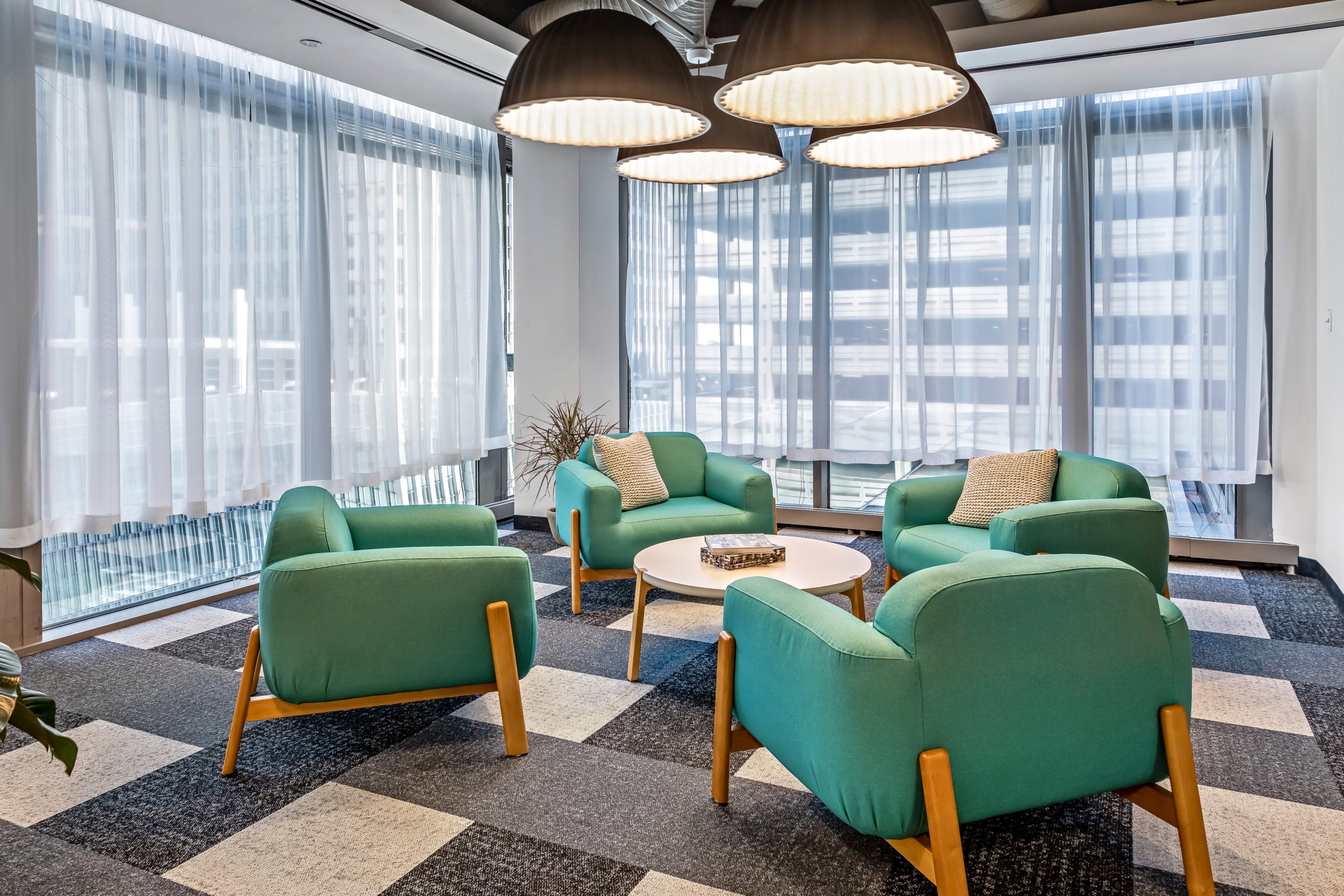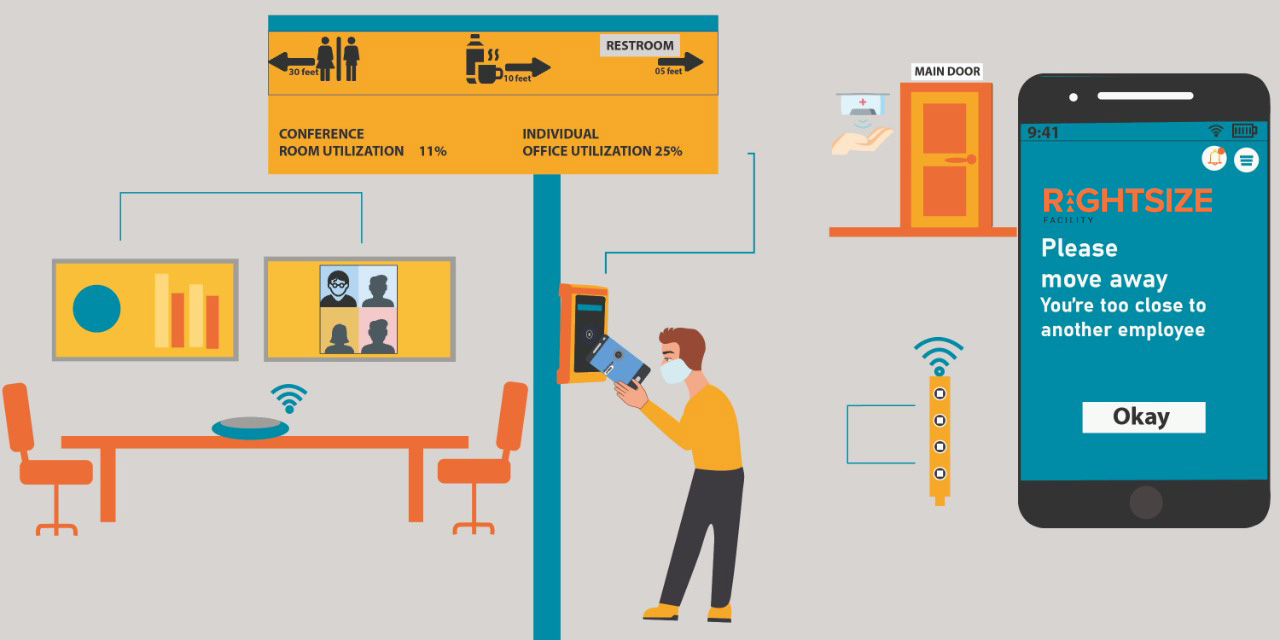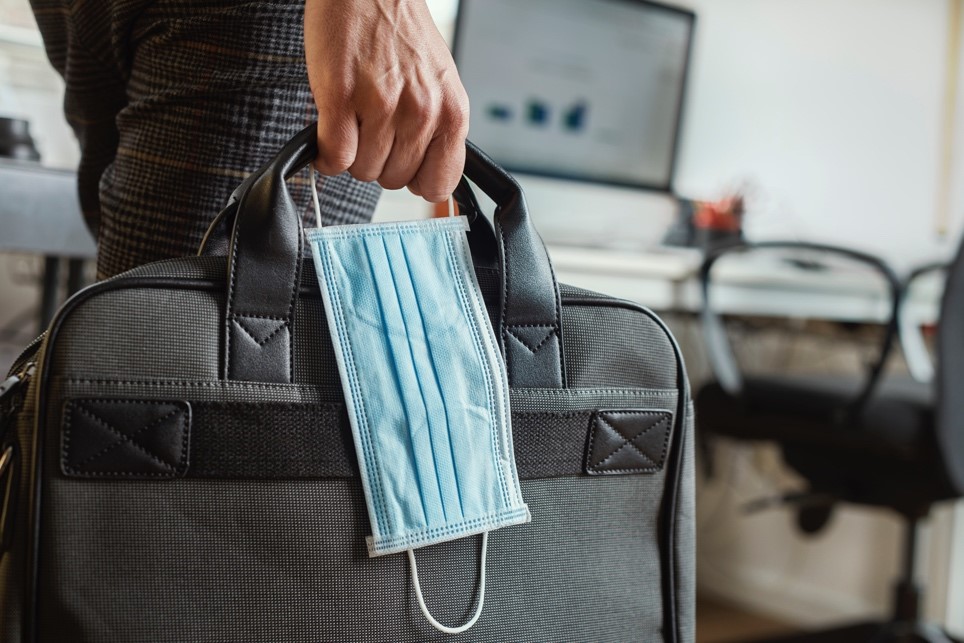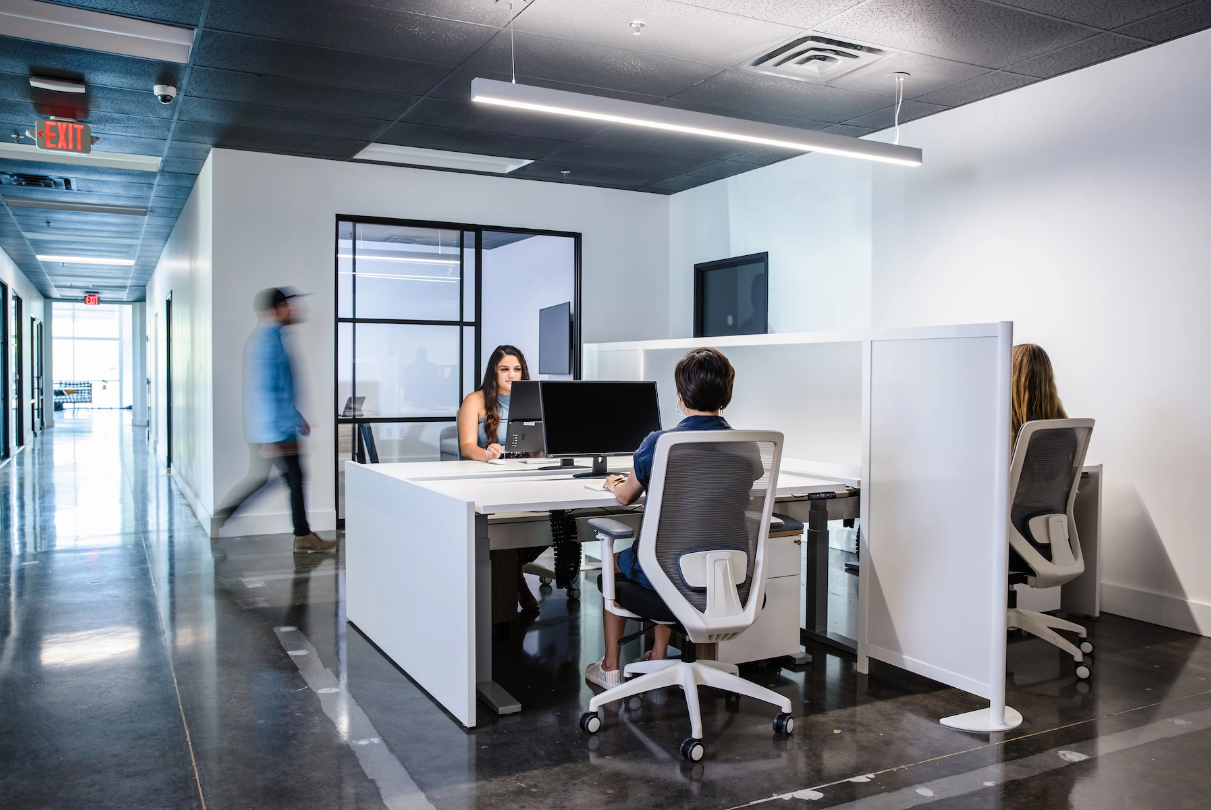Get ready to incorporate natural textures such as wood and stone into your office design this spring and summer, as natural themes are in trend. Using natural light to enhance workers’ happiness and reduce operational costs is also a popular principle. Eco-friendly designs that preserve the environment, such as green walls, are in vogue. For color schemes, light and dark colors such as green and beige are favored, along with incorporating company logo colors. “Homey” amenities such as cozy sofas, luxurious carpets, and artworks are becoming more popular. Artistic wall decorations, noise reduction, and right acoustics, flexible layouts, combining antique and modern elements, smart technology design, and safe surroundings are all trends in office design. By embracing innovative and comfortable designs, you can stay ahead in business and impress customers.
Continue reading2022 Office Design Trends: Culture & Purpose
Use Feng Shui For Success In The Workplace
Workplace 2.0 – Unity & Community
Businesses were forced to embrace a lot of changes last year, and the office environment is a direct reflection of that. Going forward, the ‘why’ of work will be essential to a successful workplace. In 2021 and beyond, workplaces will need to focus on unity and community with both employers and employees reminded of the end goal, which, in turn, will allow organizations to thrive.
Moving forward we will start to see that companies will begin offering their employees multiple ways of working to choose from:
- Regular office-based workers who are in the office at least three times a week with an assigned workspace/desk
- Flexible workers who go into the office once or twice a week and work at designated or reservable workspace/desk
- Remote workers who visit one of several, centrally located office hubs a few times a year
With social distancing restrictions loosening and employees returning to work, many office spaces have been subject to re-configurations to ensure the safety, functionality, and well-being of their employees. Below we have highlighted some of collective changes you can anticipate as we continue transitioning back to the office environment – all working collectively to foster the 3 C’s: Collaboration, Connectivity and Community.
Community-Centered Office Design
Creating a sense of community in traditional offices by introducing Resimercial (residential meets commercial) design trends or incorporating meeting spaces and bars and lounges had been trending even before the pandemic. These will continue to play well in larger spaces, as they offer a place where employees from different departments can safely co-mingle. It is also worth noting that according to JLL human performance research, 89% of employees think of their colleagues as a second family, so creating these types of spaces will help to boost morale.
Office as Experience
The biggest question facing employers and on everyone’s mind right now is whether employees will actually want to go back to the office full-time once the pandemic slows down? The fact of the matter is that in some cases, the answer will still be no.
From a hiring and talent retainment perspective, employees will start to prioritize flexible working first. The space itself should be designed in such a way as to really encourage employees working flexible hours to want to spend more time in the office. And for those working full time from the office each day, it should provide the same comforts and benefits as the home environment they worked from for most of 2020.
While some businesses are open to the idea of flexible working, we are finding that others are not and once the vaccine is widely available and the pandemic slows down, they want their entire staff back in the office Monday-Friday, like they were pre-pandemic.
Regardless of your company’s preference, the best way to keep employees happy, healthy, and secure is to make working in the office a pleasant and enjoyable experience. To do so, you can offer things such as – complimentary coffee and healthy snacks; implement new wellness initiatives like yoga and gym memberships; incorporate more Resimercial elements like lounges and comfortable furniture; more green spaces; exercise, meditation areas, and even game/leisure spaces.
Technology & Connectivity
As remote working appears to be part of the long-term plan for at least of handful of employees, spaces will need to be configured to streamline and optimize digital communications between those in the office and those working from home or remotely. For those in the office, it can be quite very disruptive when a colleague jumps onto a Zoom or Teams call on their laptop, so setting up a dedicated videoconferencing room can solve this issue. Not only will it enable private conversations and meetings to take place it will also provide confidentially can also function as an additional breakout room for your team. You can also anticipate seeing new technology to facilitate videoconferencing such as larger screens, movable webcams and bluetooth and voice-enabled speakers. If you happen to currently have furniture systems in your space with integrated power, then you’re already one step ahead of the game.
The Positive Effects of the Pandemic on the Office Interiors & Design Industry
The trends which we have highlighted here point towards a future where Collaboration, Connectivity and Community will be the centerpiece of future office design. Sustainability will also be a focal point and sourcing sustainable furniture, fixtures & equipment (FF&E) will help to lower organization’s carbon footprint and benefit the environment in the process.
By remaining agile and providing flexibility and choice to your employees you will increase productivity, improve unity and connectedness as well as the overall happiness and morale of your team. The cultural benefits of becoming ‘flex-able’ going forward may not be a current line item on your P&L statement, but don’t be surprised if that changes in the future.
With all of this considered, the office of tomorrow will be an innovative and inspiring place, and if you start to incrementally make positive changes to your space now, your team will be eager to return to the office in droves!
Contact Rightsize Facility here.
Focus on Health and Wellness for Future Office Spaces
The built environment shapes our behaviors and lifestyles, and the COVID-19 pandemic has dramatically impacted the design and operation of commercial buildings in several ways. From shutting down for months at a time to rethinking the way we view and reconfigure spaces to keep occupants safe—it is becoming clear that coming out of the pandemic, the focus is going to be on health and wellness. Savvy developers and workplace designers are already realizing that incorporating health and wellness into building and workspace design isn’t just going to be a luxury—it’s going to be a necessity.
The spaces people occupy, including their homes as well as offices, have an enormous impact on health, well-being and productivity. These spaces will be reconfigured and retrofit with more movable partitions, workstations and seating options that can easily accommodate social distancing. All of which contribute to the bottom line and make economic sense for any organization.
There is no one size fits all solution, and the built environment and workspaces need to be designed for a multitude of working arrangements that allow workers the means to easily make meaningful changes to the space, while still creating the sense of place, character, pride and purpose that aligns with the unique values of the company. Some of the resulting workspace trends to anticipate include:
- supportive environments with employee health in mind;
- more multifunctional furniture and increased collaboration spaces;
- a welcoming design and better overall work environment; and
- spaces that cater to remote workers.
- Who is this building for?
- How can buildings and workspaces stay relevant long-term?
- What sort of shared offerings will occupants desire in the future?
- What visual tools best convey opportunities to attract tenants?
The ability to help tenants visualize something that they might not see for themselves is the key to unlocking value in any real estate asset. CBRE has an interesting Office Ready concept they’ve rolled out and Cushman & Wakefield have taken it one step further with their Plug+Work approach.
The ongoing designing for wellness trends will continue and the built environment will be reflective of a much more “mind-body-spirit” approach than it ever has before. Sustainability features and well-being will take center stage, and things that used to be something of an afterthought in the design process—such as the amount of natural light and flexible furnishings—will become far more prominent in design discussions. Access to outdoor work areas, flexible and remote work arrangements, green spaces, and anything to enhance comfort and encourage mental and physical well-being will become the norm.
Whether we are ready for it or not, the future of work is fast approaching, and our lives will forever be changed. It seems everybody out there is prophesizing and predicting what the “future of work” or the “new normal” will look like, along with the timeframe to expect it. What the past several months have taught us is that we can work from anywhere we need to—whether it’s in a private office, a coworking space, an ergonomically sound sit-to-stand desk with matching chair or simply at a kitchen table. A work-from-anywhere movement is developing and employee and employer expectations have shifted.
Businesses will continue to have at least a partially remote workforce, and it’s time to rethink the way buildings and workspaces are designed to embrace and benefit from what we’ve learned about how remote and hybrid teams can be as productive as a fully staffed office. To attract and retain tenants and top talent, we need to start thinking of the office as a place we go to “do business,” rather than a place where we go to work every day—and it all starts with designing for wellness.
Contact Rightsizes Facility here
2021 Office Design Trends
Office design is about creating a productive, stress-free environment. As innovation in design continues to develop annual office design trends will reflect the most recent discoveries about an office environment that reflects this.
This year, design trends center around two factors: younger labor and a global pandemic. These factors have changed the dynamics of office design and are most likely going to impact office spaces well into the future. If there ever was a time to upgrade an office design, now would be the time to do so.
6 of the Best Office Design Trends to Emerge in 2021
These design trends are the latest to emerge as a result of a changing workforce and corporate environment. These annual trends reflect what designers have discovered – over the past twelve months – about employee conduct concerning design.
1. Hominess
The workforce is getting younger, and with that, a clear shift is being made to accommodate them. The most obvious shift is the inclusion of homey elements in office design, also known as resimercial. This design trend fuses commercial function with a residential aesthetic. Because millennials – who currently make up the largest generation in the labor force – are accustomed to working from home, the resimercial design is far more conducive to their work habits.
The most prominent design features included in the hominess trend are faux pot plants, centerpiece rugs and chandeliers, and floor to ceiling curtains. The overall design closely resembles a residential living space while still having the function necessary for commercial use.
2. Pivot Spaces & Design-Led Dividers
The global pandemic is the catalyst to the most out-of-the-blue shift in design trends. Because at no point before the pandemic was social distancing and physical barriers a requirement for designers. Now the workforce is acutely aware of the virus, and the repercussions of a pandemic are etched into the collective consciousness of the public, physical barriers are essential. Not only are these design trends helpful to comply with CDC guidelines, but they have also put the mind of anxious employees at ease while ensuring that illness doesn’t spread in an office.
The first trend to emerge as a result of the pandemic are pivot spaces. These are spaces that are easy to reconfigure. Currently, offices are using pivot spaces to create clusters of workstations or workstation neighborhoods. These neighborhoods insulate sound when employees are hosting remote meetings to ensure the call isn’t interrupted by background noise, and those around them are not interrupted by the meeting.
The second trend to emerge is design-led dividers that make the division between employees and visitors more aesthetic. These dividers are still being fine-tuned to ensure they meet CDC guidelines and reduce the spread of droplets.
3. Sustainability
Yet another trend furthered by a younger workforce who acknowledge that businesses’ ethos are quintessential to their sense of belongingness and well being. Therefore, businesses are introducing or strengthening sustainable practices in their offices, including the use of energy-efficient lighting, water-saving fixtures, recycling, and storage for alternative transport to work such as bicycles and scooters.
4. Use of Scents
Offices are testing the use of scents on the productivity and creativity of their employees. While there isn’t much research surrounding the effectiveness of scents on physiological activity, some recent studies do reveal that there could be a connection.
Popular scents for office spaces are coffee, cinnamon, and the aroma of fresh baked goods. These scents are relatively easy to implement in an office and – supposedly – have benefits ranging from creativity to peace of mind.
However, this is a trend that requires caution, as you should also keep in mind that some employees may be sensitive to scents, and strong aromas could end up being more distracting than invigorating.
5. Individuality
It makes sense that another trend would surround millennial and Gen Z employees because in 2021, there will be far more Gen Z employees – who could be as old as 24 – in the workforce.
Individuality is something younger employees resonate with. The old cookie-cutter office design is not something younger employees appreciate, usually leading to lower retention rates, more sick leave, and a decrease in productivity and overall well being.
Offices are therefore encouraged to showcase the company’s ethos and individuality through the use of color, configuration, and interactive decor pieces. This individuality should also help create a connection between the employee and the company’s culture.
6. Employee Design
Plenty goes into creating an optimal workspace, but the most significant part of creating an office is that it benefits employees. Redesigning an office is also an opportune time to boost employee morale showing your employees how essential they are to the company. This trend requires that you first get feedback from employees about the changes they would like to see in the office. The feedback can be as simple as sending employees a poll and choosing design requests with the most votes.
If you’re in two-minds about implementing the most recent design trends, you’re not alone. Trends are usually confused with fads. However, our list of trends is a concise look at what your business can do to increase competitiveness, secure talent, retain employees, and accelerate output. Because design is imperative to reach those goals. 2021 Office design trends are not limited to what is popular this year. Instead, they reflect a changing landscape and the latest progression in design.
Contact Rightsize Facility here.
Contactless Technology Return To The Office
4 Ways to Help Employees Feel Safe When Returning to Work
After months of quarantine, returning to the workplace probably feels like a love-hate relationship right now for many people. After all, COVID-19 was certainly a major disruption that shook society both personally and professionally. And with millions falling victim to the infectious virus, it is no wonder why people, as eager as they are to get back to ordinary life, are wary about returning back to work as more States give the green light to reopen.
Now, even though re-entry anxiety is at an all-time high, you are not doomed as a business if your employees are pushing back due to health fears. By implementing new actionable and emotion-driven strategies, you can help ease them back into work confidently and feel safe as they head into the new post-pandemic norm. Since these alterations are easier said than done, here are some ideal ways to support your employees on their uneasy journey in returning back to work again.
- Update Your Workplace, and Let Your Employees Know About It
If there is one thing we’ve learned, some space modifications are in order upon reopening. This means you need to nail down loose ends in your workspace and optimize it to be as “pandemic friendly” as you can. Some things you can do include updating sanitization procedures, cleaning out the air vents, adding no-touch technologies, temperature checks, visual reminders to wash hands and think about retrofitting your current space by adding office divider panels and consider reconfiguring the space to promote better separation.
Though these are all great, make sure you send out a communication email to your employees, so they know what you did and see you are prioritizing their health. Trust is a significant factor in re-entering the workspace.
- Have Weekly One-on-One Check-Ins
If you run a small business or even a medium-sized one, then think about carving out some time once a week in the first few months of employee re-introduction to sit down and talk with each employee one-on-one. Ask them how they are feeling and allow them to be open with you about what they like, dislike, and areas they think you can improve on. Doing this process makes employees feel heard and valued, and you gain insider information on health/safety areas you might have overlooked.
Tip: If you run a larger business, try bi-weekly meetings or skip-level group ones.
- Remind Employees of their Legal Rights
When you are transparent to your team about their rights and ensuring that they understand them, this will ease their fears because they will be reminded that they have a say if they see something being manipulated. Give them copies of the OSH Act, which states that employees can refuse to work if they have reason to believe they are in danger or feel threatened in any way. If they see this legalese documentation, it is one step closer to making them feel more secured and having a sense of respectful control.
- Show Gratitude
This one might be a given on any account, but it is exceptionally dire during a pandemic. In a nutshell, trust can be increased when employees feel appreciated and valued, especially when they are risking their health to come work for you. By recognizing that they returned to work to support the business during times of uncertainty is key to making them feel more relaxed and less anxious. This, in conjunction with providing them resources to optimize their feelings of safety and comfortability, are all ways to show you respect them and that they matter to you.
Conclusion – Little Changes Go A Long Way
Even though there is still no vaccine available yet, you and I both know that the show must go on in terms of business. And with that reality means that your employees have to start transitioning back to their typical duties after months of being away. But don’t reopen with the mindset that everyone feels safe jumping back into the game. Society has shifted as a whole, and what was once standard operations might not work as well anymore in making employees feel comfortable.
With that being said, do your due diligence and give them an environment that they can feel secured heading back to. By taking some time to make little changes, such as mentioned above, they can collectively make a big difference in helping your employees feel less anxious and more excited to return to the workplace. In the end, your efforts will not only help them feel safe, but will build a stronger company culture overall, and that is something that will carry on long after this pandemic is over.
Download our Return to Work Playbook here.
Buying Office Partition Panels: What You Need To Know
The highly anticipated return to work is finally upon us, and with it, a list of requirements workplaces need to meet to ensure the workspace is safe for their employees. But, for many employers, there’s another concern. Workers are concerned about working in the office environment they left behind. For this reason, installing office partition panels is both about following guidelines but also reassuring employees that their safety is your number one priority.
The Advantages of Installing Office Partition Panels
The CDC recommends that workplaces “Install transparent shields or other physical barriers where possible.” However, for workplaces, there are a host of other advantages to following the CDC recommendations. These include:
Creating A Sustainable Office Space
Installing office partition panels enable workplaces to be resilient to new outbreaks. One thing COVID-19 has highlighted is that workplace design can – and should – always be improved to reduce the risk of possible threats. Ultimately, installing office partitions make a workplace more sustainable.
Sustainability will become a buzzword of return to work campaigns. This is something workplaces should be cognizant of because installing office partition panels will be crucial to unlocking a sustainable workplace. Regardless of how long COVID-19 remains, having an efficient design will produce long term benefits.
Implementing Additional Safety Precautions
Office partition panels function as an additional safety precaution in preventing the spread of COVID-19 and other illnesses spread by droplets.
COVID-19 may not be here forever, but common illnesses like the flu, strep throat, or colds spread through workspaces during the flu-season and greatly diminish the productivity of workers because co-workers are constantly infecting and reinfecting their peers.
Enriching Employee Wellbeing
Open plan office spaces can be triggering to employees who suffer from – or are prone to – stress and anxiety. While employees can still interact with their colleagues, having office partition panels is a great way to prioritize employee mental wellbeing while maintaining a cohesive and collaborative work environment.
Increasing Productivity
Working in isolation has taught us two things:
- Young kids love making appearances on Zoom meetings, and
- Working in isolation can help employees maintain productivity.
While working another month or two in isolation may be agonizing for employees, by installing office partition panels you create the sort of private and secluded environment employees enjoyed when working remotely, but add the benefits of working with teammates.
Besides, being in isolation also means employees have fewer distractions and can get the job done!
Various Panels and Their Purposes
What role will office partition panels play in advancing your workplace?
Creating physical barriers isn’t as simple as erecting panels and calling it a day. There are many different partitions with several different purposes and functions, all of which will greatly add to your work environment if selected correctly. If you choose the right partition, investing in office partition panels will be valuable.
Desk dividers can be divided (pun intended) into several smaller groupings, these include:
Desk Shields
Made of a clear, durable, and easy to maintain acrylic material, desk shields enable you to keep an open plan office feel, but with the health and safety benefits of other partitions.
Desk shields are transparent and can be installed on most desks to create up to 270-degree protection.
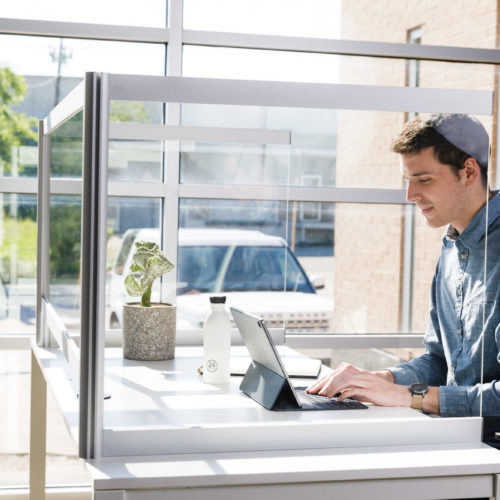
Mobile Dividers
If you’re searching for a short term or easy to install solution mobile partitions can be beneficial. The name says it all. Mobile dividers are easy to move and can be configured to accommodate diverse office setups.
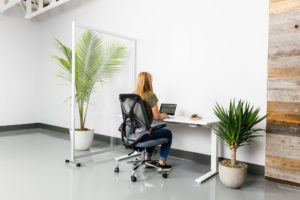
Office furniture screens can be a multi-purpose solution. You can add office shields to existing partitions to maximize their benefits, but you can also use your office furniture partitions to serve other functions, one example is office furniture screens can double as whiteboards.
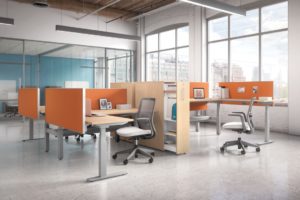
Cubicle partitions are a classic office partition. They’re durable, reliable, and can be configured in a variety of designs. They also offer employees privacy while reducing common office noise and distractions, enabling employees to escape to their mini-private office in a bustling office environment.
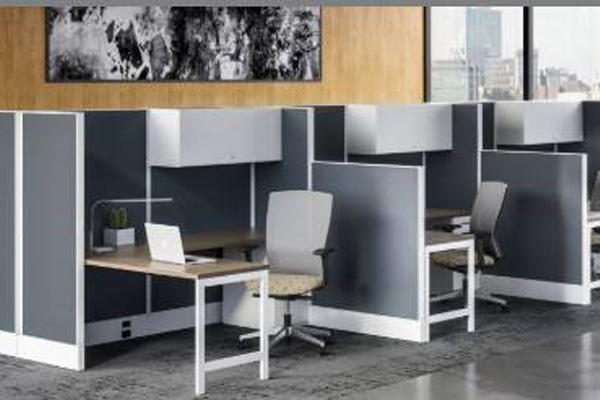
What You Need To Consider To Select The Best Panels for Your Workplace
To ensure you’re getting a partition that’s suitable for your office space, here are some matters you need to consider when selecting an office partition.
Structure
How durable, pliable, or sturdy do you need your office partitions to be? Depending on your needs you should choose a partition designed to handle the amount of wear-and-tear that will occur in the office. Therefore, it is vital to consider the materials in use.
Functionality
Consider the purpose the partition will be serving? Besides protecting from illnesses spread through droplets, office partition panels can have numerous other functions. Discussing your needs with a professional will help you determine what more you can do with office partitions so they have long term benefits.
Adaptability
How well will the office partitions you choose, adapt to an evolving work environment? It isn’t advised to use office partitions as a short term solution because if effectively incorporated into your office design, the benefits of partitions are definitive.
Since you’re heading back to the office, why not download our Return to Work Playbook? This superior resource covers the precise steps you need to take to ensure your employees are safe and adjust easily to their new work environment.
